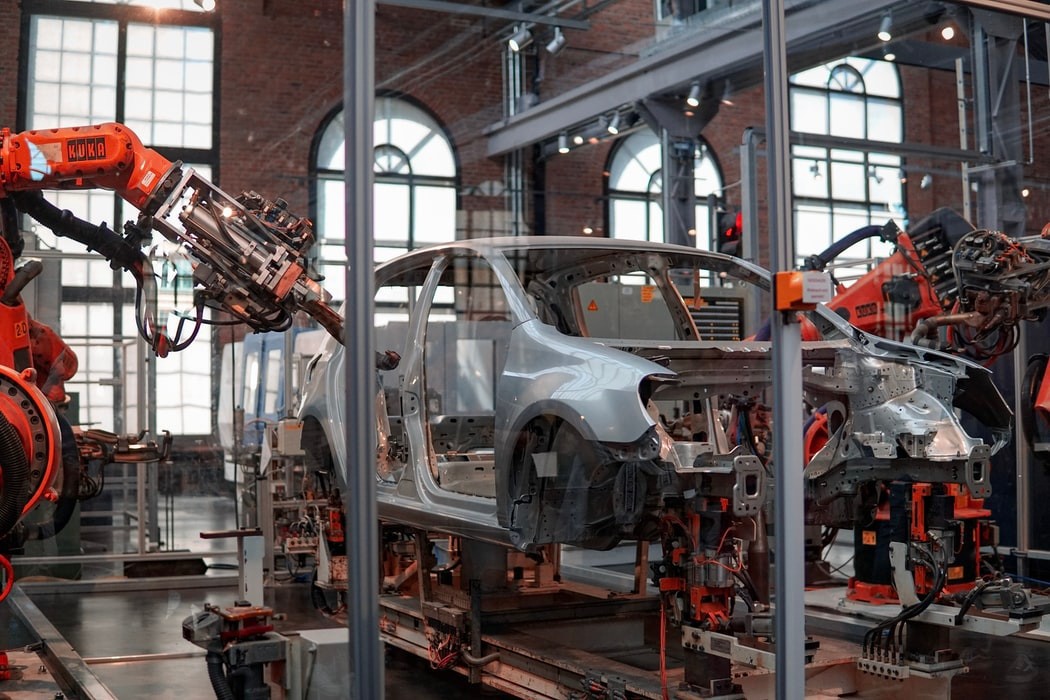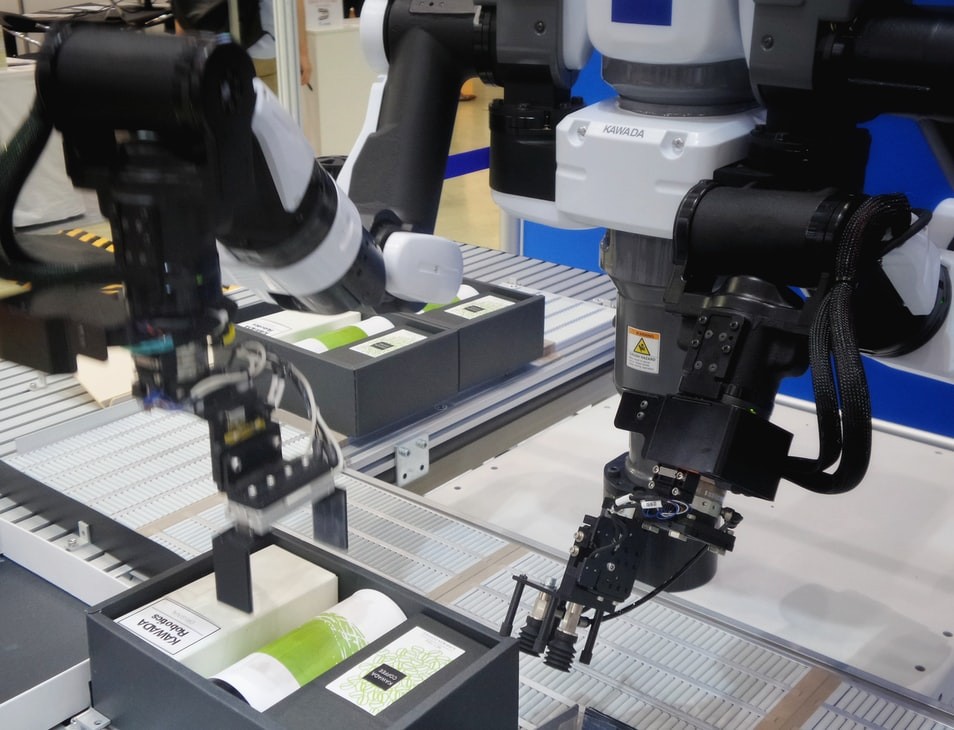5 Robots Changing Manufacturing Forever

Demand for goods is continually growing around the world — and factories can sometimes struggle to keep up. In situations like these, where manufacturing companies need to boost productivity, they turn to advanced technology — like robots — to improve their ability to produce goods.
Right now, robots are having a major impact on global industry as developers find ways to apply breakthroughs — like artificial intelligence — to robotics. In some cases, the latest robots are radically reshaping how goods are created. Here are five types of robotic technology that have changed and keep changing the manufacturing industry:
1. Collaborative Robots

Collaborative robots — sometimes called cobots — are robots specially designed to work alongside people in factory environments. They primarily handle tasks where human workers are still necessary, but typical manufacturing robots would be too dangerous or impractical.
Some of these cobots are mechanical arms used to move pieces from storage to the workplace. Others package finished goods or wrap up pallets of items.
Because they work in such close quarters with people, cobots possess unique safety features. For example, a cobot may have adjustable movement programming that can allow gentle motions depending on the task. Another may have sensors that can detect if a person is in the way and trigger an emergency stop. With these safety features, these bots can work alongside human workers or easily pass off a task to them without fear of causing injury.
2. Autonomous Mobile Robots (ARMs)
Autonomous mobile robots (or AMRs) are robots that can move through factory environments without needing help from a human operator. These robots take advantage of a type of artificial intelligence called machine vision to "see" their environment. With this technology, the robot can detect obstacles and workers' movements and plan paths. This ability allows them to get around by themselves.
Manufacturing and warehouse settings mostly use these AMRs for moving items. Often, developers build these robots to transport heavy loads that usually require multiple workers or heavy equipment to move.
3. Industrial Robot Arms
Robot arms handle massive payloads in factories that manufacture large goods — like industrial equipment and cars. In these factories, these arms move heavy items from one part of the plant to another. They may also hold up pieces so that they can be worked on or inspected. Some of the strongest robot arms can easily lift thousands of pounds.
Most of these robots work via pneumatic power assemblies. They have a system that generates compressed air and sends it to an actuator, or motor, to power and control the arm's motion.
Despite their size and weight, these robots can also be very precise. However, they're typically caged off or not used in applications where workers need to be close by. This factor is simply due to how dangerous their power can make them.
Some of these robot arms also come with special coatings that help them work in extreme conditions. These coatings may make them resistant to acid or help them handle extreme heat. As a result, these arms can work in a metal plant that processes acidic or metal-eating chemicals.
4. Robots With Machine Vision
Machine vision tech is also enabling other kinds of robot to perform routine inspections.
One example is quality control robotics. These robots use AI to visually detect issues with inspected parts. They can also tell if a component isn't up to spec — maybe it's too long or too short or has visible defects. If the robot detects a problem, it can pull the part from the production line. That keeps it from being installed in a finished item or holding up the manufacturing process.
These robots are especially popular with manufacturers because quality control is one of the more tedious steps in the manufacturing process. Robots with machine vision can help quality control workers or allow them to focus on more important tasks. This ability can make the overall manufacturing process easier, more efficient and more comfortable for workers.
5. Robotic Blacksmithing
Also known as metamorphic manufacturing, robotic blacksmithing is a possible replacement for other production methods. Right now, most manufacturers use methods like traditional machining or additive manufacturing techniques like 3D printing.
This manufacturing method uses a combination of special tools, robotic arms and sensors to reshape metal and other materials. The robotic blacksmith uses its sensors to detect the object's shape while adding heat and pressure using lasers and its arms.
Rather than cut away material like with machining, or build it up as with 3D printing, robotic blacksmithing reshapes an entire component. This feature enables robotic blacksmithing to produce less waste than other forms of manufacturing. As a result, it's a good fit for businesses wanting to make their factories more sustainable and resource-efficient.
Robots Are Changing How Factories Work
Industrial producers are looking for ways to keep up with growing demand, and many have turned to some of the latest robotics.
These new robots include cobots, which are designed to work with humans, as well as heavy-duty robot arms. They can boost productivity and increase efficiency by working alongside human workers and decreasing waste in the manufacturing process. In the future, as demand for goods continues to grow, these robots may become an even more common sight on factory floors.
Thanks for helping to keep our community civil!
This post is an advertisement, or vandalism. It is not useful or relevant to the current topic.
You flagged this as spam. Undo flag.Flag Post


